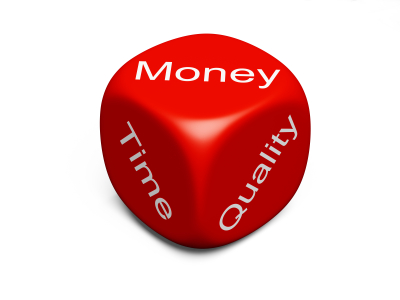Measuring blogging ROI is crucial to your overall marketing success.
Just as with outbound marketing activities, your company’s inbound marketing efforts should be given the same attention when it comes to Return on Investment (ROI) analysis. In fact, companies who measure inbound marketing ROI are more than 12 times more likely to generate better year-over-year returns. And with blogging being reported as the number one method for increasing website traffic, it should stand to reason that calculating ROI for your blogging efforts is crucial to your overall inbound marketing success.
Calculating ROI for blogging activities isn’t as straightforward as say, ROI from click-to-conversion, but its achievements can be measured in other ways. Consider employing a blend of these four categories to measure the effectiveness of your blogging efforts.
Audience and Content Reach
According to a 2013 HubSpot report, 85% of marketers reported increased web traffic within seven months of beginning inbound marketing activities. While it’s true that building a successful blog can take some time, there are things you can do (and measure) to speed its maturity. Encourage engagement and reach by crafting relevant and interesting content for your audience. This increases the likelihood your content is shared and commented on by your readers.
Track this: Beyond noting any increases in web traffic, track both your average cost per view and the number of comments and social shares your blog content receives.
Lead Generation
Tying revenue directly to publishing and distributing blog content can be difficult. Thinking about blogging activities within the context of your entire sales funnel can make it easier to determine effectiveness. As blog content is typically used to attract leads, encourage readers to subscribe to your blog or submit contact info to get higher-value content. Continued engagement nurtures leads and moves them further down the sales funnel.
Track this: The cost to get a lead. You can then determine the percentage of leads that move on to become qualified leads, the percentage of qualified leads that then become opportunities, and the percentage of opportunities that are ultimately won. At the end of the day, you’ll be able to calculate the revenue generated from leads that entered the funnel from blog content.
Intangibles
What are you gaining from networking with industry peers? Has your blog played a role in developing and nurturing professional relationships? Could you consider your blogging activities as part of your professional development? Blogging provides benefits outside of traditional marketing ROI measurements. Time spent researching, networking, writing, and engaging with others in your industry should certainly be considered when determining overall usefulness of blogging.
Track this: Sales cycle times. Staying current with industry trends and building a reputation as the go-to industry expert can be reflected in the type of customers and clients you are attracting. Are you attracting more high-quality leads and closing more ideal customers? Thank your blogging activity.
Cost of Customer Acquisition (CoCA)
By understanding how much it costs your business to acquire a new customer, you gain valuable insight into how much your business should be investing on blogging activities.
Track this: Calculate your (CoCA) by dividing your cost to blog by the number of visits the blog. For example, let’s say your company spent $500 on writing a blog post and 100 people visited your site. Your Cost of Visitor Acquisition will be $5 ($500 divided by 100). If 5% of those blog visitors convert into a lead then your Cost of Lead Acquisition (CoA) is $100 ($500 divided by 5 customers). If 10% of those leads actually buy something from you, your final Cost of Customer Acquisition is $50. Investing in one blog post will yield one new customer for every $50 you invest.
While it can feel a little unwieldy to measure ROI from blogging activities, keeping a strong focus on blogging goals and objectives will help to lend weight to metrics that will ultimately matter the most to you and your business. What measures does your company use to measure ROI for blogging?

